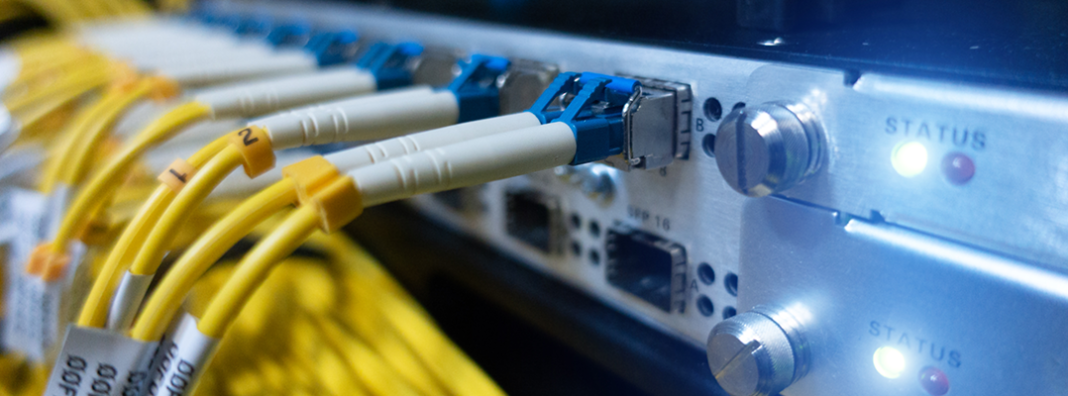
There is a bipartisan push to make high-speed broadband a key component of an infrastructure bill. President Biden promised to support cities and towns wanting to build broadband networks during his campaign, saying it “will encourage competition among providers, to increase speeds and decrease prices in urban, suburban, and rural areas.” Ultimately, Biden concludes, “high-speed internet access should be a great economic equalizer for rural America, not another economic disadvantage.” The CGO has published a spate of research recently, which suggests that policymakers should moderate their expectations. Oddly enough, competition is poorly connected to broadband quality, and broadband buildout is unlikely to cause a dramatic shift in local economic conditions. It’s popular, but broadband expansions are not a cure all for sluggish economies.
CGO recently released a paper from economists Michael Kotrous and James Bailey that explores the impact of new fiber broadband offerings on broadband quality within a market. Like so many other research papers in this space, the results are complicated and require context. However, Kotrous and Bailey’s findings show that entrants do not have the level of impact that would merit calls for widespread investment in municipal broadband.
Kotrous and Bailey use the FCC’s Form 477 data on fixed wireline broadband service to create a data set that spans from December 2014 to December 2018. The analysis puts a spotlight on fiber, cable, and aDSL technologies, and excludes satellite and wireless competition. The data has its limitations, derived mainly from gaps in the FCC’s data generating process, but there is still much to glean about the shifts in broadband competition over time.
The authors kick off their discussion by underscoring the dynamic competition environment among broadband providers in the U.S. Among other takeaways, they find:
- Speeds for all services have increased, but the rates of increase varied widely. Average fiber download speeds increased about 165 percent from 2014 to 2018, cable increased 617 percent, while aDSL speeds increased by only 34 percent. (Table 2)
- Fiber services had the highest average download speeds in December 2014, but cable speeds surpassed fiber in December 2018.
- Most census blocks had one and only one provider for each technology. (Table 5)
- The average number of aDSL and fiber providers in cable-served blocks increased significantly between 2014 and 2018. (Table 6.2)
In short, competition between the same type of providers, or intraplatform competition, isn’t a common trend. If there is a cable service in a region, there will typically be only one cable company, just as there will only be one fiber provider and one DSL service. Much as the Telecommunication Act of 1996 had hoped, Internet service competition is among different service technologies. The biggest story in interplatform competition is the expansion of fiber into new markets in the 2014 to 2018 time period.
The second part of the paper uses a variety of economic models to test the impact of fiber on the rest of the market. The results of their econometric model reflect a complex market.
The authors find that cable overbuilds, in areas already serviced by an incumbent, tend to have significantly lower average download speeds than cable broadband in blocks with no overbuild.
In previous work at the CGO, I explored one common model used to understand infrastructure builds, derived from Bresnahan and Reiss’s pioneering work. As they found, the population required to support a second firm in a region is often much larger than the population needed for a single firm. As I explained,
In their example, a small town of 800 people could support one dentist, but if the entry of a second dentist intensifies competition, it will take more than 1,600 residents to support two dentists. Sometimes, it will take nearly double the population. In Bresnahan and Reiss’s example, a total of 2,400 residents would be needed to support a second dentist. The addition of a third or fourth firm often requires an incremental population increase similar to the second. Moreover, competition often kicks in quickly, but doesn’t increase much with each additional entrant. Using the Bresnahan and Reiss framework, Xiao and Orazem estimated that, “Once the market has one to three incumbent firms, the fourth entrant has little effect on competitive conduct.”
In other words, Kotrous and Bailey’s findings suggest that it is probably economically inefficient to overbuild. In turn, policymakers might consider implementing a rule that limits overbuilds in their grant programs due to this effect.
The relationship between cable and fiber is far more complex. Because the FCC doesn’t report any speeds above 1 GB, gigabit fiber projects are all grouped together, complicating the analysis. Gigabit fiber competition is negatively correlated with cable download speeds (Table 9 in the paper). At the same time, non-gigabit fiber providers tend to predict faster cable speeds. Overall, this relationship explains a small share of the observed increase in cable speeds between 2014 and 2018. Fiber competition seems to have also pressured cable companies to upgrade to a new technical standard, DOCSIS 3.0 to DOCSIS 3.1, which greatly improved the quality of the service. But, as the authors were quick to point out, “our econometric results suggested that the economic and statistical relationship between gigabit fiber provider entry and incumbents’ service quality is limited.”
As I’ve laid out in other CGO research, there can sometimes be a crowding out effect of municipal broadband. Subsidized investment in the form of a municipal broadband service might shift support from cable and telephone providers if an area can only support only so much investment. Work published last year by economist Steven Landgraf discovered that municipal broadband services are “associated with lower maximum upload and download speeds offered by private cable and DSL providers.” It could be, then, gigabit fiber projects are having a small substitution effect on the top end, while all of the non-gigabit fiber projects are cajoling incumbents to increase their speeds everywhere else.
Policymakers should pay special attention to two big takeaways from Kotrous and Bailey. For one, competition between services is still a small part of the overall shift towards higher quality offerings. New fiber entrants don’t have a huge impact on service quality, especially since there have been dramatic increases in broadband speeds over time. Since quality changes typically come from either competitors or consumer demand, cable and aDSL services are probably responding to consumer demand rather than market competitors.
Second, there are some critical limitations to the Kotrous and Bailey paper, which apply broadly to broadband research and policy. As they are clear to point out, their model doesn’t allow for causal inference. Market entry by a gigabit fiber provider isn’t random, so the results might pick up relationships connected with the market-entry decision rather than the market-entry effect. Likewise, policy should be crafted with an effect in mind, not just for the purpose of having another broadband provider in a region.
The big selling point for broadband is economic development. Indeed, Biden is right that broadband should be the great equalizer, but it remains one component among many, critical for local economic success. As I explained elsewhere,
The few studies that try to understand this relationship by employing causal identification strategies muddle the picture even more. De Stefano et. al. found no effect from broadband on the performance of firms in England, while Kolko found a positive effect on economic growth but not on employment rate or wages. Work from Akerman et. al. discovered that broadband rollouts tend to skew skill demand, improving the labor outcomes and productivity of skilled workers while worsening the outcomes and productivity of low skilled workers. Other research tends to confirm this skill polarization effect.
CGO’s recent research on broadband should temper the unrealistic proclamations about what this service can do when taken together. Reinvigorating communities will take much more effort than just putting broadband in the ground.

